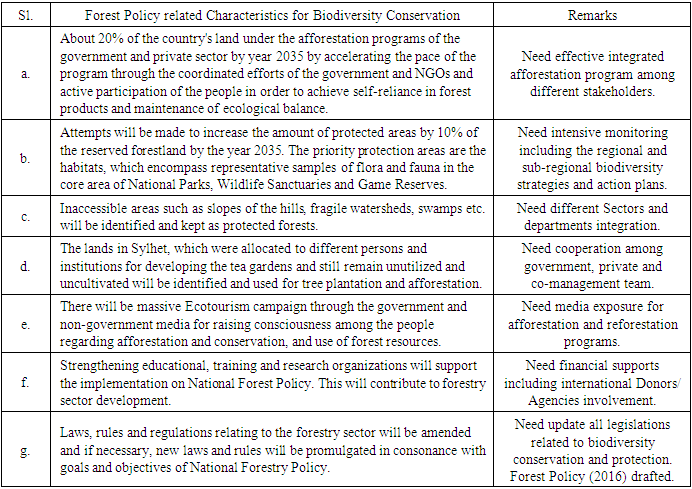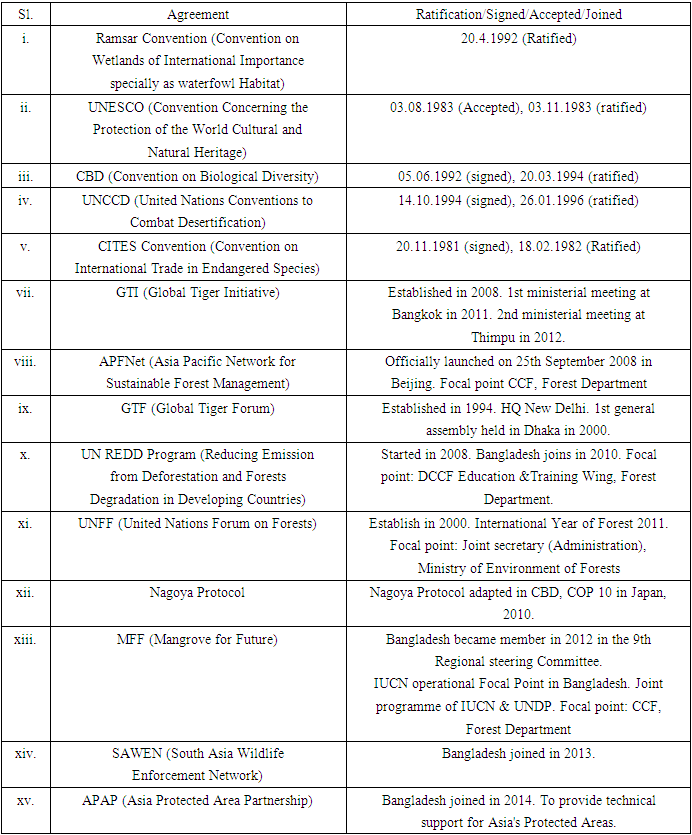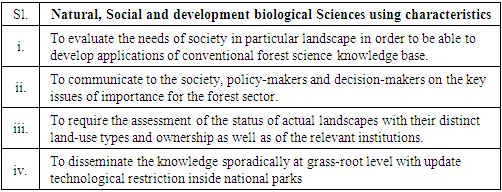| [1] | Jentsch, A., Wittmer, H., Jax, K., Ring, I., and Henle, K. 2003. Biodiversity: Emerging Issues for linking natural and social sciences. GAIA 12(2): 121-128. |
| [2] | Liaison Unit Vienna. 2000. General Declarations and Resolutions: Adopted at the Ministerial Conferences on the Protection of Forests in Europe. Vienna, Ministerial Conference on the Protection of Forests in Europe. |
| [3] | Juffe-Bignoli, D., Burgess, N.D., Bingham, H., Belle, E.M.S., de Lima, M.G., Deguignet, M., Bertzky, B., Milam, A.N., Martinez-Lopez, J., Lewis, E., Eassom, A., Wicander, S., Geldmann, J., van Soesbergen, A., Arnell, A.P., O’Connor, B., Park, S., Shi, Y.N., Danks, F.S., MacSharry, B., Kingston, N. (2014). Protected Planet Report 2014. UNEP-WCMC: Cambridge, UK. |
| [4] | Hunter, M.L. (ed). 1999. Maintaining biodiversity in forest ecosystems. Cambridge University Press, Cambridge. |
| [5] | Noss, R.F., O`Conell, M.A. & Murphy, D.D. 1997. The science of conservation planning. Island Press, Washington, D.C., 246. |
| [6] | Margules, C.R. & Pressey, R.L. 2000. Systematic conservation planning. Nature 405, 243– 253. |
| [7] | Pressey, R.L., Ferrier, S., Hager, T.C., Woods, C.A., Tully, S.L. & Weinman, K.M. 1996. How well protected are the forests of north-eastern New South Wales? Analyses of forest environments in relation to formal protection measurements, land tenure, and vulnerability to clearing. Forest Ecology and Management 85, 311-333. |
| [8] | Scott, J.M., Csuti, B., Jacobi, J.D. & Estes J.E. 1987. Species richness: A geographic approach to protecting future biodiversity. BioScience 37(11), 782-788. |
| [9] | Scott, J.M., Csuti, B., Smith, K., Estes, J.E. & Caicco, S. 1988. Beyond endangered species: An integrated conservation strategy for the preservation of biological diversity. Endangered Species Update 5(10), 43-48. |
| [10] | Scott, J. M., Csuti, B., Estes, J.E. & Anderson, H. 1989. Status assessment of biodiversity protection. Conservation Biology 3(1), 85-87. |
| [11] | Scott, J.M., Davis, F., Csuti, B., Noss, R., Butterfield, B., Groves, C., Anderson, H., Caicco, S., D'Erchia, F., Edwards Jr., T.C., Ulliman, J. & Wright, R.G. 1993. Gap analysis: A geographic approach to protection of biological diversity. Wildlife Monographs 123, the Journal of Wildlife Management 57(1), 1-41. |
| [12] | Iacobelli, T., Kavanagh, K. & Rowe, S. 1995. A protected areas gap analysis methodology. WWF Canada, Canada, Toronto. |
| [13] | Jennings, M.D. 2000. Gap analysis: concepts, methods, and recent results. Landscape Ecology 15, 5-20. |
| [14] | Boersma, P.D. 2001. Foreword. In: Conservation biology: Research priorities for the next decade. Soulé, M.E. & Gordon H.O. (eds). Island Press, pp. ix-xi. |
| [15] | WDPA (World Database on Protected Areas). 2011. available at www.wdpa.org. |
| [16] | Andam, K. S., Ferraro, P. J., Pfaff, A., Sanchez-Azofeifa, G. A., and Robalino, J. A. 2008, ‘Measuring the Effectiveness of Protected Area Networks in Reducing Deforestation’, Proceedings of the National Academy of Sciences, 105(42), 16089–94. |
| [17] | PAB. 2016, July 30. Protected Areas of Bangladesh (PAB), Bangladesh Forest Department, Ministry of Environment and Forests, Government of the People’s Republic of Bangladesh, Dhaka, Bangladesh. url: http://www.bforest.gov.bd/index.php/protected-areas. |
| [18] | Hossain, M.K. 2001. Overview of the forest biodiversity in Bangladesh. In: Assessment, conservation and sustainable use of forest biodiversity (CBD Technical Series no. 3). Secretariat of the Convention on Biological Diversity, Montreal, 33-35 pp. |
| [19] | Rufford. 2014, August 19. www.rufford.org/files/75.07.05%20Detailed%20Final%20Report.doc. |
| [20] | RIMS (Resource Information Management Systems). 2015. RIMS Unit, Bangladesh Forest Department, Ban Bhaban, Ministry of Environment and Forests, Government of the People’s Republic of Bangladesh, Dhaka. |
| [21] | UNEP-WCMC. 2016. Global Statistics from the World Database on Protected Areas (WDPA), Cambridge, UK. Available at: https://www.protectedplanet.net/c/monthly-updates/2016/december-update-of-the-wdpa. |
| [22] | Chape, S.; Blyth, S.; Fish, L.; Fox, P. and Spalding, M. 2003. The 2003 United Nations List of Protected Areas, IUCN and UNEPWCMC, Cambridge, UK. |
| [23] | Muhumuza, M. and Kevin Balkwill, K. 2013. Factors Affecting the Success of Conserving Biodiversity in National Parks: A Review of Case Studies from Africa. Hindawi Publishing Corporation. International Journal of Biodiversity. Vol.2013, Article ID 798101, 20 pages. http://dx.doi.org/10.1155/2013/798101. |
| [24] | UNEP-WCMC. 2017. Protected Area Country Profile for Bangladesh from the World Database of Protected Areas, January 2017. Available at: www.protectedplanet.net. |
| [25] | Coad, L., N. Burgess, L. Fish, C. Ravilious, C. Corrigan, H. Pavese, A. Granziera, and C. Besancon 2015. Measuring impact of protected area management interventions: current and future use of the Global Database of Protected Area Management Effectiveness. Phil. Trans. R. Soc. B 370: 20140281. |
| [26] | BFD (Bangladesh Forest Department).2016. Formal Legal System of Protected Areas in Bangladesh. Bangladesh Forest Department, Ministry of Environment and Forests (MoEF), Government of People’s Republic of Bangladesh, Dhaka, Bangladesh. |
| [27] | Bruner, A.G., Gullison, R.E., Rice, R.E. and Fonseca, G.A.B. 2001. Effectiveness of parks in protecting tropical biodiversity. Science, 291: 125–128. |
| [28] | Soulé, M.E. and Sanjayan, M.A. 1998. Conservation targets: do they help? Science 279: 2060–2061. |
| [29] | CBD. 2010. Convention on Biological Diversity (CBD)-Conference on Party (COP)- 10, Decision X/2. |
| [30] | TCPRB (The Constitution of the People’s Republic of Bangladesh). 2012. Protection and Improvement of Environment and Biodiversity. Fundamentals Principles of State Policy [Part II], Article 18A. The Government of People’s Republic of Bangladesh, Dhaka. Web: http://bdlaws.minlaw.gov.bd/print_sections_all.php?id=367. |
| [31] | Murray, BC, Kelly, SJ, & Ganzi, JT. 1997. “Review of Environmental Risk Management at Banking Institutions and Potential Relevance of ISO 14000‟, Research Training Institute Working Paper, RTI Project Number 57744, North Carolina. |
| [32] | Islam, M.T. 2014. People’s Participation in Protected Areas of Bangladesh. Presentation at 1st Asia Parks Congress (APC). Management Planning Unit, Forest Department, Ministry of Environment and Forests, Government of the People's Republic of Bangladesh, Dhaka. |
| [33] | ABT (Aichi Biodiversity Targets). 2010. Target 11. Conference of the Parties (COP) to the Convention on Biological Diversity. Tenth meeting, Nagoya, Japan, 18-29 October 2010, Agenda item 4.4. UNEP/CBD/COP/DEC/X/2. url: https://www.chm-cbd.net/tools/abt. |
| [34] | WB (The World Bank). 2016. Forest Area Changes data analysis from the World Bank. Available at: http://data.worldbank.org/indicators/AG.LND.FRST.ZS. |
| [35] | FAO (Food and Agriculture Organization). 2015. Bangladesh- Global Forest Resources Assessment 2015- Country Report. FAO, Rome. |
| [36] | GRR (Global Risk Report). 2016. Biodiversity Loss and Ecosystem Collapse: Some Countries in South-East Asia. Global Risks Report 2016, 11th Edition, pp.1-103. World Economic Forum, Geneva, Switzerland. URL: http://www3.weforum.org/docs/GRR/WEF_GRR16.pdf. |
| [37] | Materne Maetz and Jean Balie. 2008. Influencing Policy Processes: Lesson from experience. Food and Agriculture Organization of the United Nations, Rome. ISBN 978-92-5-105984-5, pp.1-127. |
| [38] | CBD. (1992). Convention on Biological Diversity. Text and Annexes, the Interim Secretariat for the CBD Geneva. URL: www.cbd.int/doc/drafts/guidelines-ia-en.doc. |
| [39] | Wildlife (Conservation and Security) Act. 2012. Article 2(15), Legislative and Parliamentary Affairs Division, Ministry of Law, Justice and Parliamentary, People’s Republic of Bangladesh, Dhaka, Bangladesh. |
| [40] | Pearce, D.W. and D. Moran. 1994. The Economic value of Biodiversity. London: IUCN & Earthscan Publications ltd. |
| [41] | CBD (Convention on Biological Diversity). 2016. Article for State Parties, Available at: www.biodiv.org/convention/articles.asp?lg=0&a=cbd-08. |
| [42] | Bierbaum, R.M. 2004. Training environmental decision-makers: A special case of environmental education. Applied Environmental Education and Communication 3(1), 1-3. |
| [43] | Laihonen, P., Ronka, M., Tolvanen, H., and Kalliola, R. 2003. Geospatially structured biodiversity information as a component of a regional biodiversity clearing house. Biodiversity and Conservation, 12:103-120. |
| [44] | NFP (National Forestry Policy). 1994. Statements of the National Forestry Policy. Bangladesh Forest Department, Ministry of Environment and Forests (MoEF), Government of the People’s Republic of Bangladesh, Dhaka. Pp.1-4. |
| [45] | Linguee. 2014. URL: www.linguee.fr/francais-anglais/traduction/le+cour. |
| [46] | Vreugdenhil, D., Terborgh, J., Cleef, A. M., Sinitsyn, M., Boere, G.C., Archaga, V.L., and Prins, H.H.T. 2003. Comprehensive Protected Areas System: Composition and Monitoring. Shepherdstown, USA: World Institute for Conservation and Environment. Web: www.linguee.fr/francais-anglais/traduction/le+cour. |
| [47] | WCS-a (Wildlife Conservation and Security) Act. 2012, Article 2(43), Legislative and Parliamentary Affairs Division, Ministry of Law, Justice and Parliamentary, People’s Republic of Bangladesh, Dhaka, Bangladesh. |
| [48] | WCS-b (Wildlife Conservation and Security) Act. 2012, Article 2(14), Legislative and Parliamentary Affairs Division, Ministry of Law, Justice and Parliamentary, People’s Republic of Bangladesh, Dhaka, Bangladesh. |
| [49] | McNeely, J.A. 1994. Protected areas for the 21st century: working to provide benefits to society. Biodiversity and Conservation, 3: 390–405. |
| [50] | Miller, A.B. 2001. Managing data to bridge boundaries. In D. Harmon (editor), Crossing Boundaries in Park Management: Proceedings of the 11th conference on Research and Resource Management in Parks and on Public Lands, pp.316-320. Hancock, MI: The George Wright Society. |
| [51] | BNP (Banff National Park). 1994. Case Study: The Banff-Bow Valley Study and Information Technology, Canada. |
| [52] | Islam, M.A. 1996. An Inventory on International Conventions, Treaties and Protocols Related to Environment and the Bangladesh Context. IUCN, Bangladesh, Dhaka. |
| [53] | BD (Bangladesh) Treaties. 2015. Bangladesh Forest Department, Ministry of Environment and Forests, Government of the People’s Republic of Bangladesh. http://www.bforest.gov.bd/site/page/b81a2e19-f10f-480c-9a88-b5e572197f39/. |
| [54] | BRC (Biodiversity Related Conventions). 2016. The Seven Biodiversity Related Conventions. Convention on Biological Diversity. Available at: https://www.cbd.int/information/parties.shtml. |
| [55] | CITES.2016. List of Contracting Parties. Convention on International Trade in Endangered Species of Wild Fauna and Flora (CITES). url: https://cites.org/eng/disc/parties/chronolo.php?order=field_country_official_name&sort=asc. |
| [56] | APAP. 2016. A regional Platform for sharing practices in protected area management. Asia Protected Area Partnership. url: http://www.asiaprotectedareapartnership.org. |
| [57] | SCBD.2011. NBSAP Training Modules, version 2.1. An Introduction to National Biodiversity Strategies and Action Plans. Secretariat of the Convention on Biological Diversity. pp.1-18. Available at: https://www.cbd.int/doc/training/nbsap/b1-train-intro-nbsap-revised-en.pdf. |
| [58] | CHM. 2010. Clearing House Mechanism: Towards a biodiversity knowledge network for scientific and technical cooperation. Convention on Biological Diversity (CBD), UNEP/CBD/COP/DEC/X/15.pp. 1-3. Available at: https://www.cbd.int/decision/cop/default.shtml?id=12281. |
| [59] | Balmford, A. P., Crane, A., Dobson, R., Green, E. and Mace, G. M. 2005. ‘The 2010 challenge: Data availability, information needs and extraterrestrial insights’, Philosophical Transactions of the Royal Society of London B, vol 360, pp221–22. |
| [60] | Braat, L. and ten Brink, P. (eds) with Bakkes, J., Bolt, K., Braeuer, I., ten Brink, B., Chiabai, A., Ding, H., Gerdes, H., Jeuken, M., Kettunen, M., Kirchholtes, U., Klok, C., Markandya, A., Nunes, P., van Oorschot, M., Peralta-Bezerra, N., Rayment, M., Travisi, C. and Walpole, M. 2008. The Cost of Policy Inaction (COPI): The Case of Not Meeting the 2010 Biodiversity Target, European Commission, Brussels. |
| [61] | Mukul, S.A., Rashid, A.Z.M.M., and Quazi, S.A. 2012. Local peoples’ response to co-management regime in protected areas: a case study from Satchari National Park, Bangladesh. Forests, Tress and Livelihoods 21: 16-29. DOI: 10.1080/14728028.2012.669132. |
| [62] | Uddin MB, Steinbauer MJ, Jentsch A, et al. 2013. Do environmental attributes, disturbances and protection regime determine the distribution of exotic plant species in Bangladesh forest ecosystems? Forest Ecology and Management 303: 72-80. DOI: 10.1016/j.foreco.2013.03.052. |
| [63] | Mukul SA .2014. Biodiversity conservation and ecosystem functions of traditional agroforestry systems: case study from three tribal communities in and around Lawachara National Park. In: Chowdhury MSH (ed.), Forest Conservation in Protected Areas of Bangladesh – Policy and Community Development Perspectives. Springer. Switzerland. pp171-179. |
| [64] | Sohel MSI, Mukul SA, Burkhard B. 2015. Landscape’s capacities to supply ecosystem services in Bangladesh: a mapping assessment for Lawachara National Park. Ecosystem Services 12: 128-135. DOI: 10.1016/j.ecoser.2014.11.015. |
| [65] | Ring, I., and C. Schroter-Schlaack, eds. 2011a. Instrument mixes for biodiversity policies. POLICYMIX report, issue no.2/2011, Helmholtz Centre for Environmental Research-UFZ, Leipzig. url: http://policymix.nina.no. |
| [66] | Vogt, K.A., Grove, M., Asbjornsen, H., Maxwell, K.B., Vogt, D.J., Sigurdardottir, R., Larson, B.C., Schibli, L. & Dove, M. 2002. Linking ecological and social scales for natural resource management. In: Integrating landscape ecology into natural resource management. Liu, J. & Taylor, W.W. (eds). Cambridge University Press, 143-175. |
| [67] | Lazdinis, M. 2002. Facilitating sustainable forest development: Comparative analysis of post-soviet forest politics in the Baltic States. PhD Dissertation, Southern Illinois University at Carbondale, USA. |
| [68] | Angelstam, P., Mikusinski, G., Rönnbäck, B-I, Östman, A., Lazdinis, M., Roberge, J-M., Arnberg, W. & Olsson, J. 2003. Two-dimensional Gap Analysis: A Tool for Efficient Conservation Planning and Biodiversity Policy Implementation. Ambio 32(8), 527–534. |
| [69] | Banik, H. 2003. Bangladesh Wildlife (Preservation) Order 1973. Shitutuni Book House and Publishers, Comilla. |
| [70] | Farooque, M and S.R. Hassan 1996. Laws Regulating Environment in Bangladesh, Bangladesh Environmental Lawyers Association (BELA), Dhaka, Bangladesh. |
| [71] | Farooque, M. 1997. Law and Custom on Forests in Bangladesh: Issues and Remedies Bangladesh Environmental Lawyers Association (BELA), Dhaka, Bangladesh. |
| [72] | Rahman, L.M. 1997. Forest Law Guide 1927. Lucky Publishers, Dhaka. |
| [73] | Rahman, L.M. 2000. The Forest Act 1927. Lucky Publishers, Dhaka. |
| [74] | MacKinnon, J., K., MacKinnon, G. Child and J. Thorsell (eds.). 1986. Managing Protected Areas in the Tropics. IUCN, Gland, Switzerland, p.295. |
| [75] | WCS-c (The Wildlife (Conservation & Security) Act. 2012. Ministry of Environment and Forest, Dhaka, Bangladesh. |
| [76] | Godfrey, L. and Todd, C. 2001. ‘Defining thresholds for freshwater sustainability indicators within the context of South African water resource management’, Second WARFA/Waternet Symposium: Integrated Water Resource Management: Theory, Practice, Cases, Cape Town, South Africa. |
| [77] | CBD (Convention on Biological Diversity). 2003. Monitoring and Indicators: Designing National-Level Monitoring Programmes and Indicators, CBD, Montreal, www.cbd.int/doc/meetings/sbstta/sbstta-09/official/sbstta-09-10-en.pdf, accessed 22 September 2010. |
| [78] | TEEB Foundations 2010 The Economics of Ecosystems and Biodiversity: Ecological and Economic Foundations (ed P. Kumar), Earthscan, London. |
| [79] | CC (Country Context). 2016. Economic, Environmental and Social Context (Chapter 2). Bangladesh Environment, Forestry and Climate Change-Country Investment Plan, Second Draft on May 27, 2016. Ministry of Environment and Forests, Government of People’s Republic of Bangladesh, Dhaka, Bangladesh. P.10. |
| [80] | Government Policy. 2016. Policies and Key Issues on Natural Resources Management. Government Policies and Key Issues (Chapter 3), Bangladesh Environment, Forestry and Climate Change-Country Investment Plan, Second Draft on May 27, 2016. Ministry of Environment and Forests, Government of People’s Republic of Bangladesh, Dhaka, Bangladesh. P.11. |
| [81] | DoE. 2016. National Biodiversity Strategy and Action Plan of Bangladesh 2016–2021. Department of Environment (DoE), Ministry of Environment, Forests and Climate Change (MoEFCC), Government of the People’s Republic of Bangladesh, Dhaka, Bangladesh, ver2, p.14. |
| [82] | Elands, B., Islam, M.W., Van der dium, R. 2015. Ecotourism in Lawachara National Park in Bangladesh: Perceptions of Local People and Co-management Officials. South Asian Journal of Tourism and Heritage, vol 8(1), pp.1–17. |
| [83] | GFW. 2016. Bangladesh-Lawachara national park information. Global Forest Watch. url: www.globalforestwatch.org/map. |
| [84] | NACOM (Nature Conservation Management). 2004. Site Level Appraisal for Protected Area Co-management: Lawachara National Park. International Resources Group, BFD-USAID, Dhaka, Bangladesh. |
| [85] | ALNP. 2017. Recovery 20 acres area of Lawachara national park from illegal encroacher. Daily Sylhet dot com, published on January 6, 2017. Administration of Lawachara National Park (ALNP), Kamalganj, Moulvibazar, Bangladesh. url:www.dailysylhet.com/details/191189/lawachara-national-park/. |
| [86] | BBS. 2013. Moulvibazar District Statistics 2011. Bangladesh Bureau of Statistics (BBS), Statistics and Informatics Division (SID), Ministry of Planning, Government of People’s Republic of Bangladesh. Pp. 1–117. url: www.bbs.gov.bd. |
| [87] | Miah, M.R., Sayok, A.K., Sarok, A. & Uddin, M.B. 2017. Towards Dynamic Policy Instruments for Enhancing Biodiversity Conservations in National Parks: A Case Study on Bangladesh and Sarawak, Malaysia. Borneo Journal of Resource Science and Technology, 7(1), 11–30. |
| [88] | Miah, M. R. (2018). Assessment of Environmental Policy Instruments along with Information Systems for Biodiversity Conservation in Bangladesh (Doctoral dissertation, PhD Thesis. IBEC, UNIMAS, Malaysia. Retrieved from https://ir.unimas.my/id/eprint/24535/ |
| [89] | Ahsan, M.M., Aziz, N. & Morshed, H.M. 2016. Assessment of Management Effectiveness of Protected Areas of Bangladesh. Strengthening Regional Cooperation for Wildlife Protection Project funded by World Bank. Bangladesh Forest Department, Ministry of Environment and Forests, Government of People’s Republic of Bangladesh., 1–113. |
| [90] | Newsome, D. and Hughes, M. 2018. The Contemporary Conservation reserve visitor phenomenon. Biodiversity Conservation, 27, 521–529. |
| [91] | Miah, M. R., Sayok, A. K., Rahman, A. A. M. S., Samdany, A. A., Akhtar, F., Azad, A. K., … Begum, M. (2021e). Impact of Sensor Networks on Aquatic Biodiversity in Wetland: An Innovative Approach. Geosciences, 11(1), 10-42. https://doi.org/10.5923/j.geo.20211101.02. |
| [92] | Miah, M. R., Mustaffa, M. S., Jayos, S., Ibrahim, N. H., Bujang, S., Saili, J., & Sayok, A. K. (2019). Towards Stimulating Tools for Advancement of Environmental Conservation through Promoting of Psychological Instruments. Journal of Sustainable Development, 12(4), 196-224. https://doi.org/10.5539/jsd.v12n4p196. |
| [93] | Miah, M. R., Hasan, M. M., Parisa, J. T., Alam, M. S. E., Akhtar, F., Begum, M., … Chowdhury, S. H. (2021d). Unexpected Effects of Advanced Wireless Sensor Technology on Climate Change. World Environment, 11(2), 41-82. https://doi.org/10.5923/j.env.20211102.01. |
| [94] | Miah, M. R. (2020c). Corona virus wide-reaching through sensor technology (Chapter 18). Cyber Dajjal: Obstacle to good health. Paprhi Prakash, Rangmahal Tower, Bandar Bazar, Sylhet, Bangladesh (pp. 115-121). Retrieved from https://rokomari.com/book/202988/cyber-dazzal---sushaysther-ontoray (Bengali language). |
| [95] | Miah, M. R., Hannan, M. A., Rahman, A. S., Khan, M. S., Hossain, M. M., Rahman, I. T., ... & Sayok, A. K. (2021g). Processed Radio Frequency towards Pancreas Enhancing the Deadly Diabetes Worldwide. Journal of Endocrinology Research, 3(1). https://doi.org/10.30564/jer.v3i1.2826. |
| [96] | Miah, M. R., Hasan, M. M., Parisa, J. T., Alam, M. S. E., Hossain, M. M., Akhtar, F., ... & Chowdhury, S. H. (2021c). Coronavirus: A Terrible Global Democracy. International Journal of Applied Sociology, 11(2), 46-82. Retrieved from http://article.sapub.org/10.5923.j.ijas.20211102.02.html. |
| [97] | Miah, M. R., Hasan, M. M., Parisa, J. T., Alam, M. S. E., Shahriar, C. S., Akhtar, F., … Chowdhury, S. H. (2022). Impact of Oscillated Wireless Sensor Networks to Initiate Cardiac Arrest. International Journal of Internal Medicine, 11(1), 1-17. https://doi.org/10.5923/j.ijim.20221101.01. |
| [98] | Miah, M. R., Khan, M. S., Rahman, A. A. M. S., Samdany, A. A., Hannan, M. A., Chowdhury, S. H., & Sayok, A. K. (2020a). Impact of Sensor Networks towards Individuals Augmenting Causes of Diabetes. International Journal of Diabetes Research, 9(2), 1-10. https://doi.org/10.5923/j.diabetes.20200902. |
| [99] | Miah, M. R., Rahman, A. A. M. S., Hasan, M. M., Parisa, J. T., Hannan, M. A., Hossain, M. M., ... & Chowdhury, S. H. (2021f). Adverse Effects of Wireless Sensor Technology to Debilitating in Numbness. International Journal of Virology and Molecular Biology, 10(1), 12-25. https://doi.org/10.5923/j.ijvmb.20211001.03. |
| [100] | Miah, M. R., Rahman, A. A. M. S., Khan, M. S., Hannan, M. A., Hossain, M. S., Shahriar, C. S., ... & Chowdhury, S. H. (2021a). Effect of Coronavirus Worldwide through Misusing of Wireless Sensor Networks. American Journal of Bioinformatics Research, 11(1), 1-31. https://doi.org/10.30564/jer.v3i1.2826. |
| [101] | Miah, M. R., Rahman, A. A. M. S., Khan, M. S., Samdany, A. A., Hannan, M. A., Chowdhury, S. H., & Sayok, A. K. (2020). Impact of Sensor Technology Enhancing Corona Disease. American Journal of Biomedical Engineering, 10(1), 1-11. https://doi.org/10.5923/j.ajbe.20201002. |
| [102] | Miah, M. R., Rahman, A. A. M. S., Parisa, J. T., Hannan, M. A., Khan, M. S., Samdany, A. A., ... & Chowdhury, S. H. (2021). Discovery of Coronavirus with Innovative Technology. Science and Technology, 11(1), 7-29. https://doi.org/10.5923/j.scit.20211101.02. |
| [103] | Miah, M. R., Rahman, A. A. M. S., Samdany, A. A., & Chowdhury, S. H. (2021b). A Dynamic Scientific Model for Recovery of Corona Disease. Frontiers in Science, 11(1), 1-17. https://doi.org/10.30564/jer.v3i1.2826. |



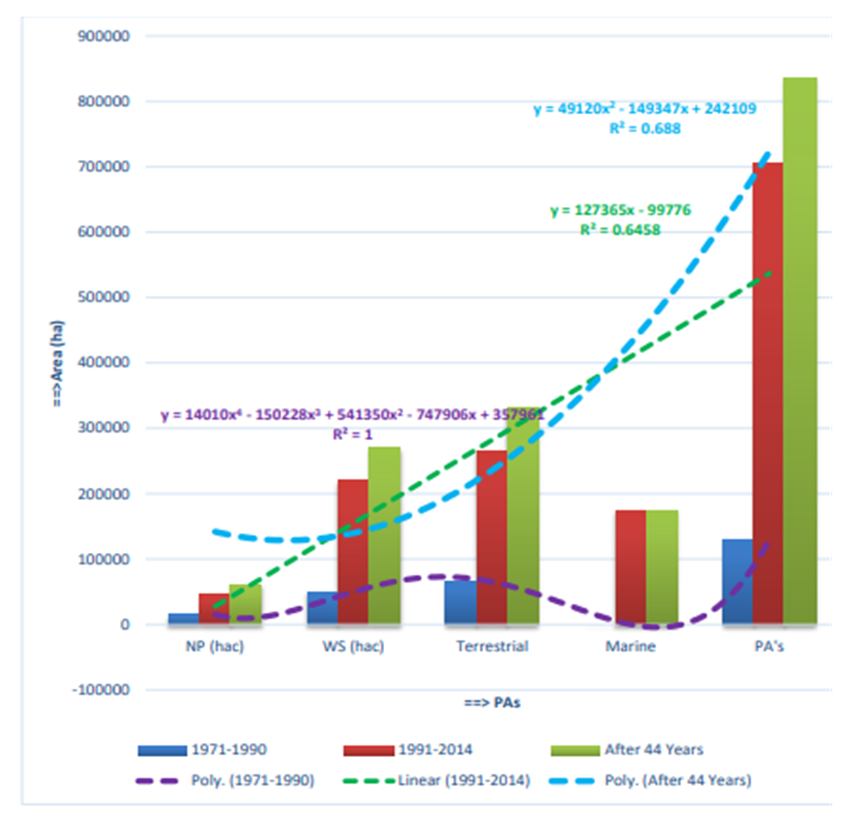



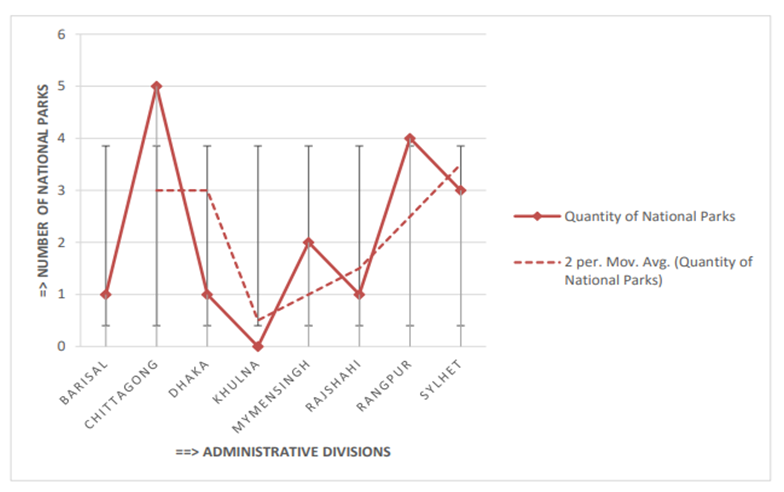

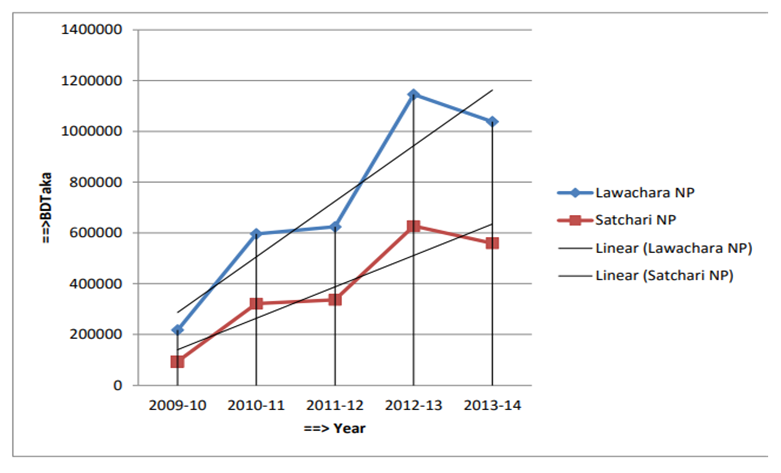




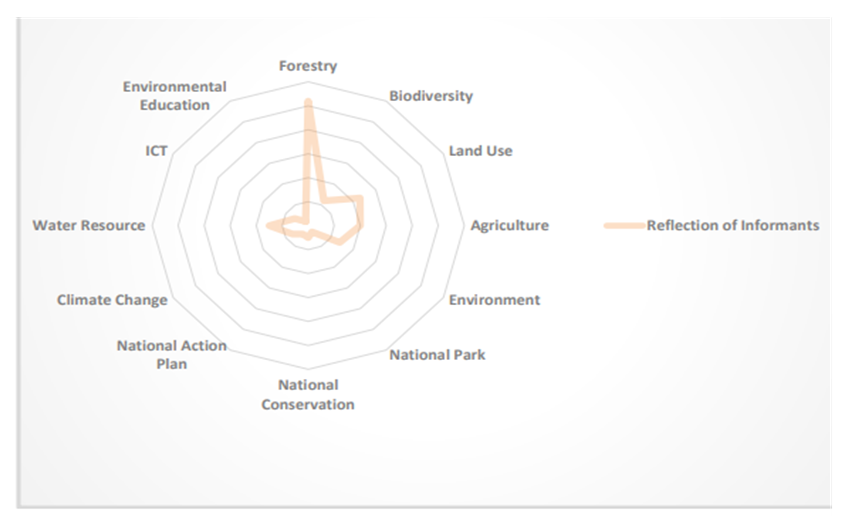

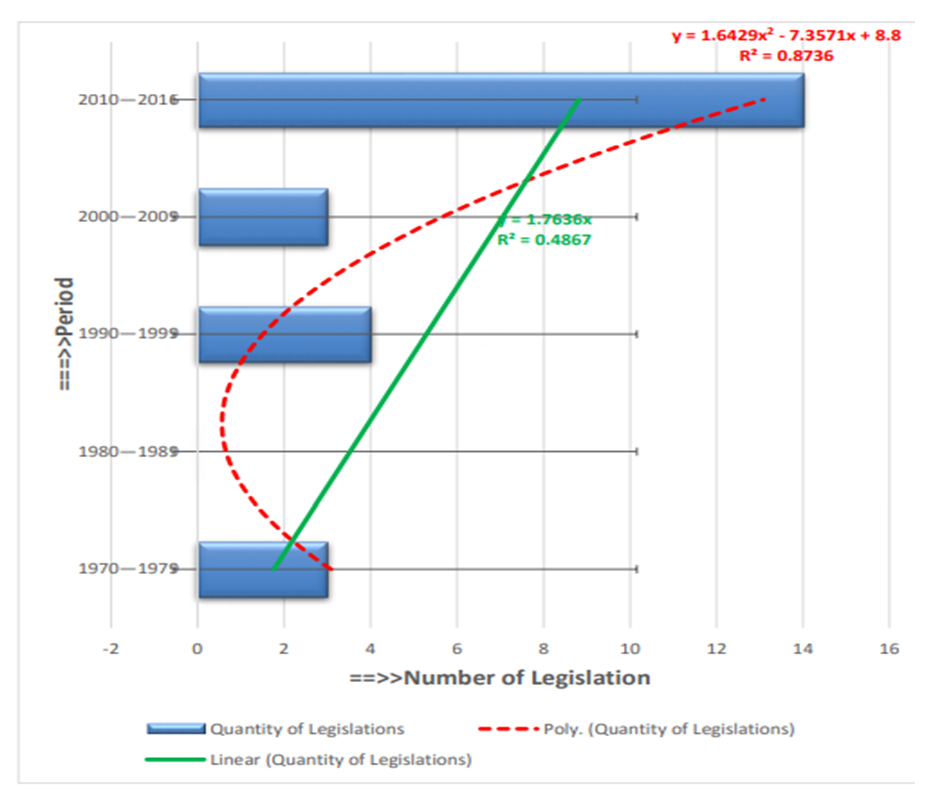
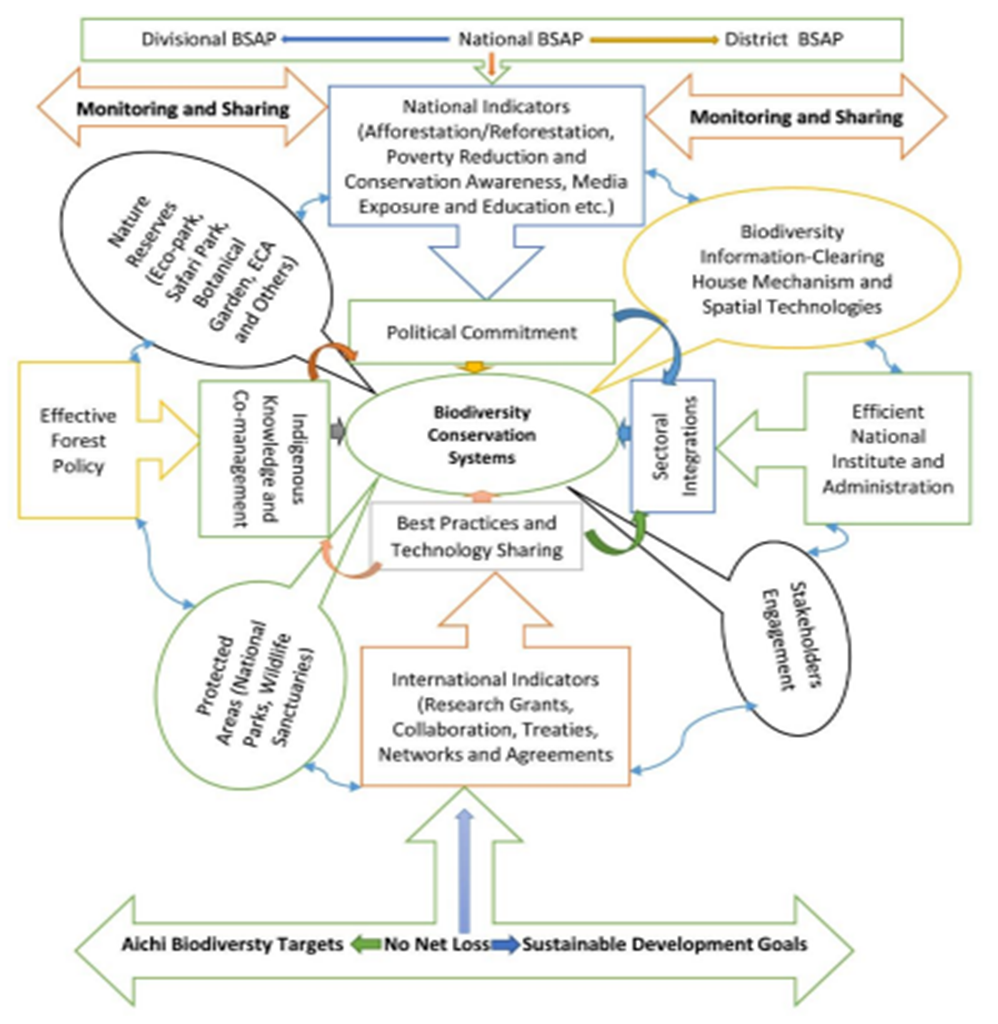
 Abstract
Abstract Reference
Reference Full-Text PDF
Full-Text PDF Full-text HTML
Full-text HTML



